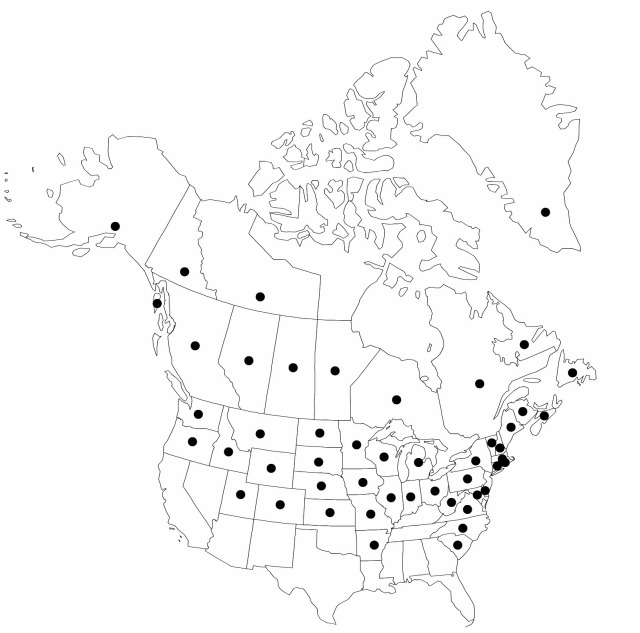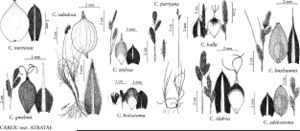Difference between revisions of "Carex buxbaumii"
Kongl. Vetensk. Acad. Nya Handl. 24: 163. 1803.
imported>Volume Importer |
imported>Volume Importer |
||
| Line 65: | Line 65: | ||
|publication year=1803 | |publication year=1803 | ||
|special status=Illustrated | |special status=Illustrated | ||
| − | |source xml=https:// | + | |source xml=https://bitbucket.org/aafc-mbb/fna-data-curation/src/2e0870ddd59836b60bcf96646a41e87ea5a5943a/coarse_grained_fna_xml/V23/V23_738.xml |
|genus=Carex | |genus=Carex | ||
|section=Carex sect. Racemosae | |section=Carex sect. Racemosae | ||
Latest revision as of 20:42, 5 November 2020
Plants cespitose, long-rhizomatous. Culms 25–75 cm, distally scabrous. Leaves 2–3.5 mm wide. Inflorescences: proximal bracts shorter than, equaling, or exceeding inflorescences; spikes separate, erect, short-pendunculate, short-oblong or elongate, 10–25 × 6–10 mm; lateral 2–3(–4) spikes pistillate; terminal spike gynecandrous. Pistillate scales light to dark brown, lanceolate, shorter or much longer and narrower than perigynia, midvein lighter colored than body, conspicuous, often raised, prominent, apex acute or acuminate, mucronate, mucro 0.5–3 mm. Perigynia ascending, gray green or whitish, faintly veined, elliptic, 2.5–4 × 1.5–2 mm, apex beakless or abruptly beaked, densely papillose; beak to 0.2 mm. Achenes nearly filling body of perigynia. 2n = ca. 106.
Phenology: Fruiting May–Sep.
Habitat: Wet meadows, marshes, fens
Elevation: 20–3000 m
Distribution

Greenland, Alta., B.C., Man., N.B., Nfld. and Labr., N.W.T., N.S., Ont., Que., Sask., Yukon, Alaska, Ark., Colo., Conn., Del., Idaho, Ill., Ind., Iowa, Kans., Maine, Md., Mass., Mich., Minn., Mo., Mont., Nebr., N.H., N.Y., N.C., N.Dak., Ohio, Oreg., Pa., R.I., S.C., S.Dak., Utah, Vt., Va., Wash., W.Va., Wis., Wyo., Eurasia.
Discussion
The plant reported by M. Raymond (1950) as Carex hartmanii Cajander is most likely this species (J. Cayouette, pers. comm.).
Selected References
None.
